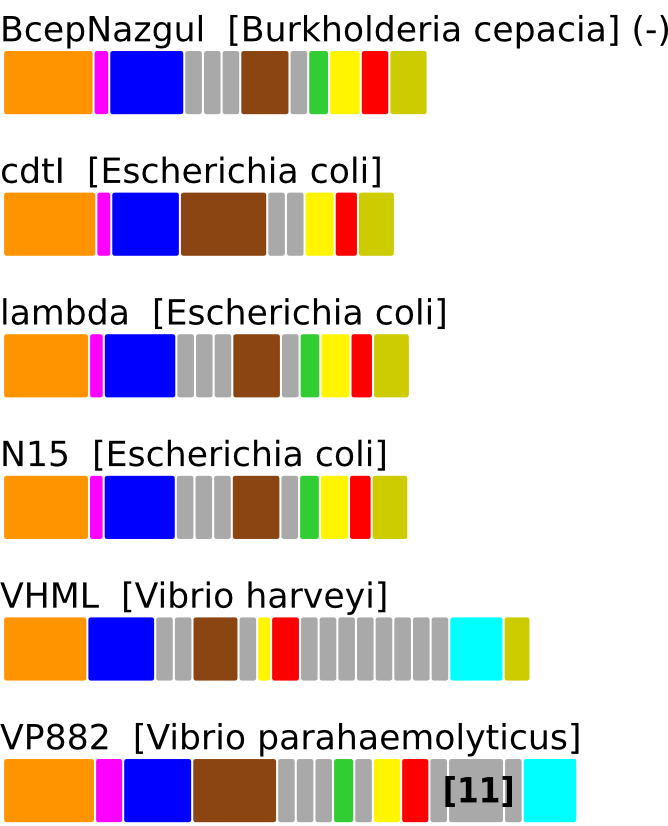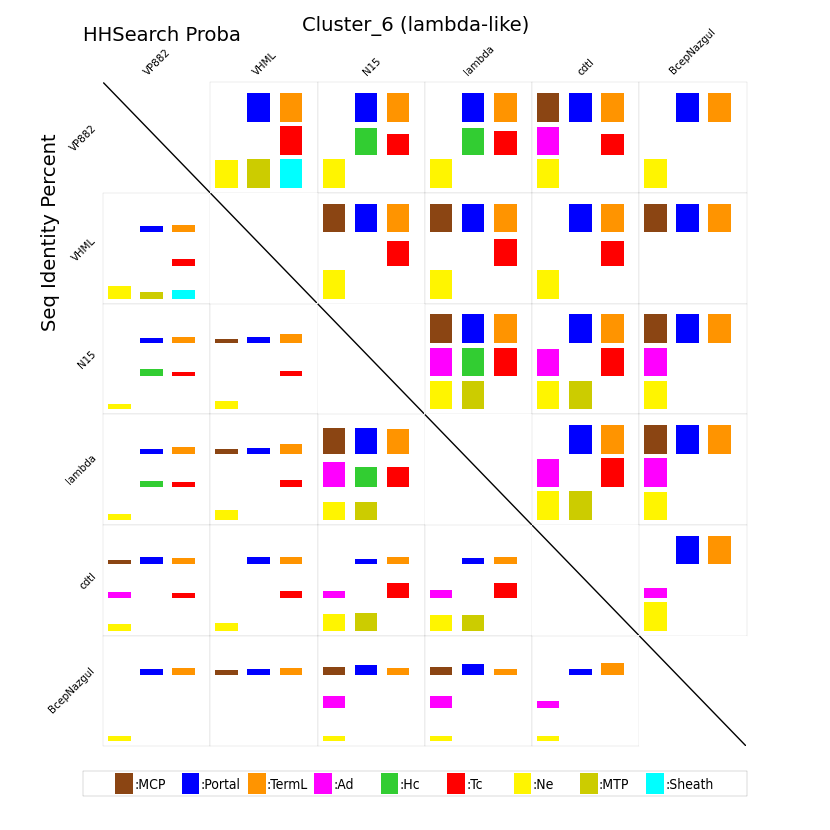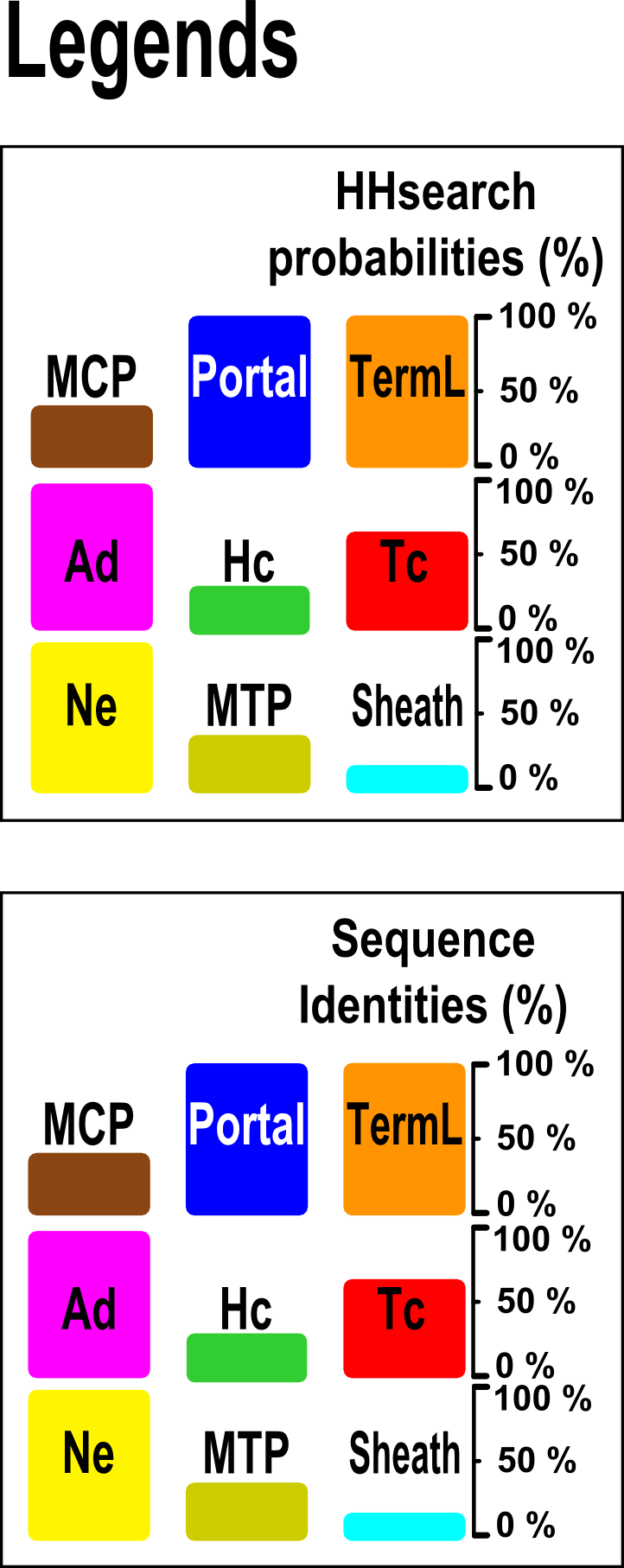The neck is the head-to-tail interface which is formed by the connector and the tail-completion proteins. The connector is formed by the portal and the head-completion proteins. (Click here for a general description of the assembly pathway of tailed bacteriophages)
adopts the structural organization of the Siphoviridae phage SPP1 neck. It is formed by a portal protein, an Ad1 (Adaptor of type 1), a Hc1 (Head-closure of type 1), a Ne1 (Neck protein of type 1) and a Tc1 (Tail-completion of type 1) proteins.
is mostly composed of siphophages (4 over 6) with 2 myophages with small genome sizes (61-150 genes). They all infect the same class of bacteria: all the hosts belong to Proteobacteria. In this cluster, all the phages, except VHML which lacks the genes Ad1 and Hc1, exhibit a different gene order compared to the canonical one observed in the majority of clusters of the type 1 family. Here, genes coding for Ad1, are often positioned between the genes coding for the Terminase and Portal proteins. Note the case of VP882, a myophage which displays the same gene composition and order of the other siphophages of the cluster.


(-) indicates that the genetic context is given in the reverse order. For more clarity, numbers between square brackets indicate the number of unannotated genes.
For every pair of phages sharing a given neck type and for all the components of the capsid-neck-tail module they share (out of the nine possible components described below), we calculated the corresponding HHsearch probability and sequence identity scores. The resulting scores are illustrated with colored squares whose size is proportional to the considered score (similarity scores lie in the bottom half matrix while HHsearch probabilities lie in the top half matrix). See legend below for square colors and for identity or HHsearch probability scores.

